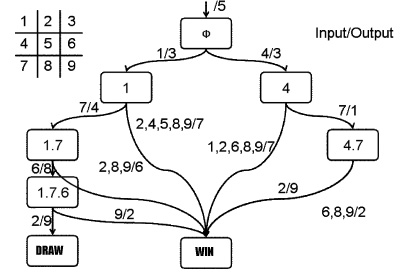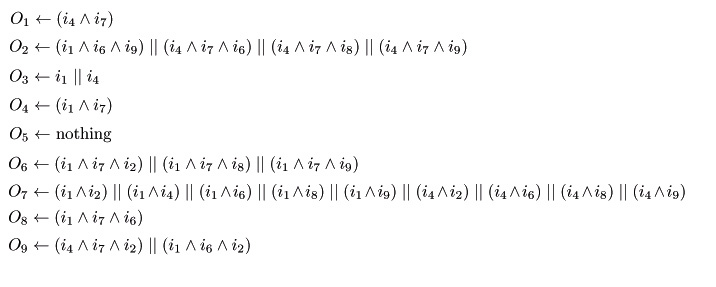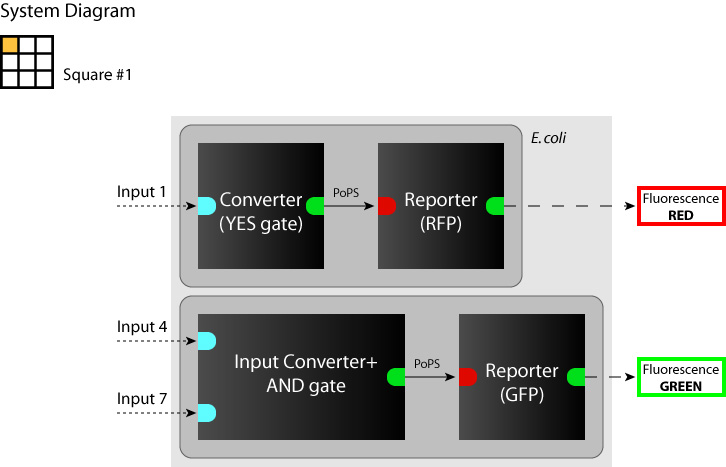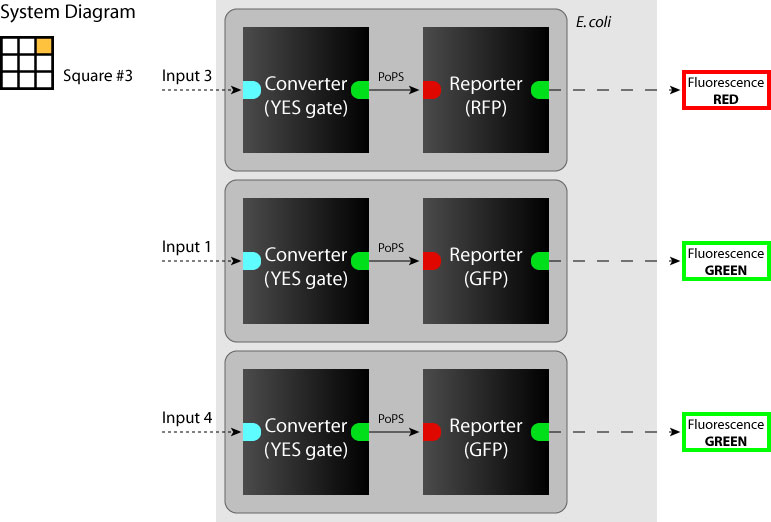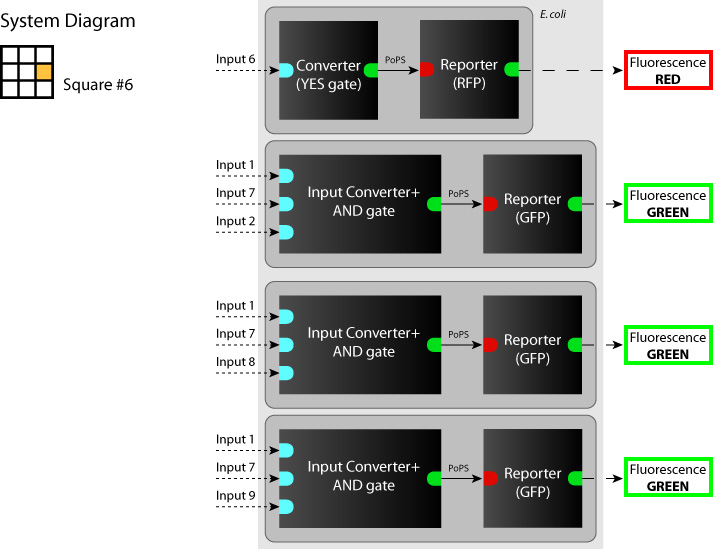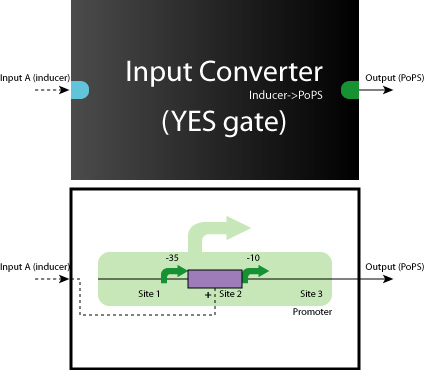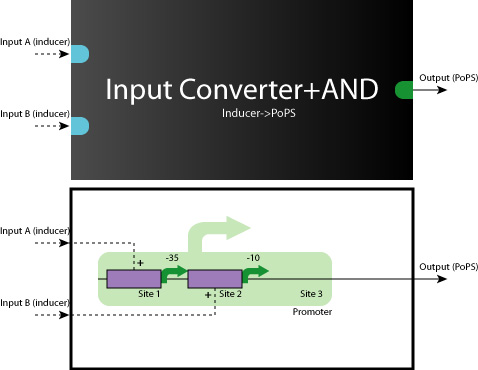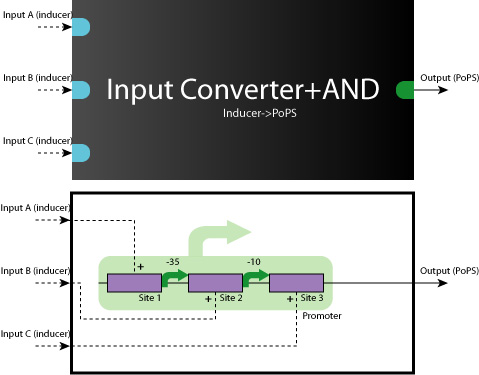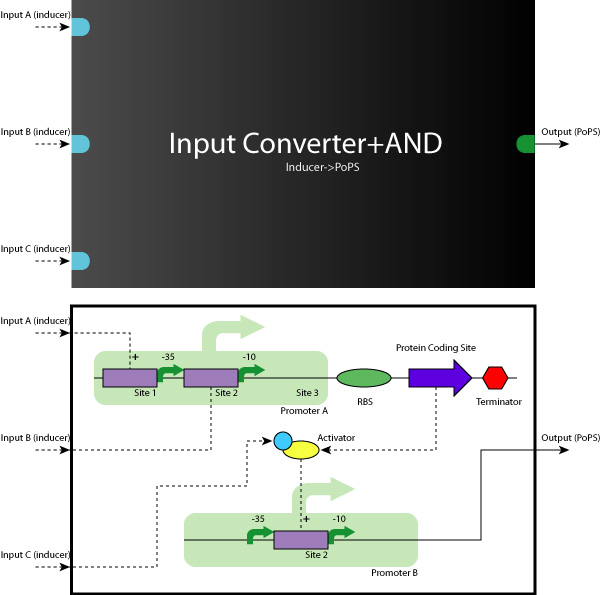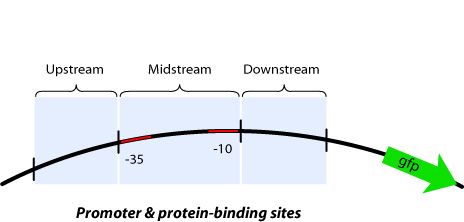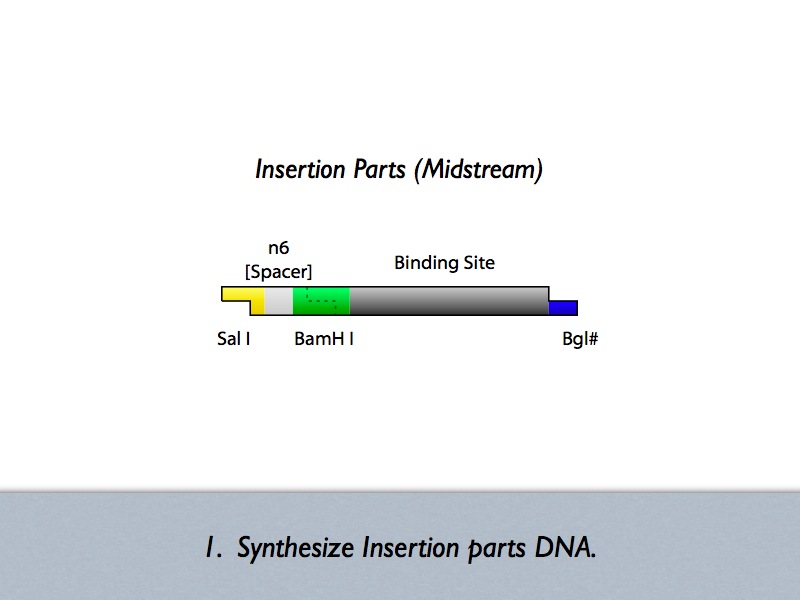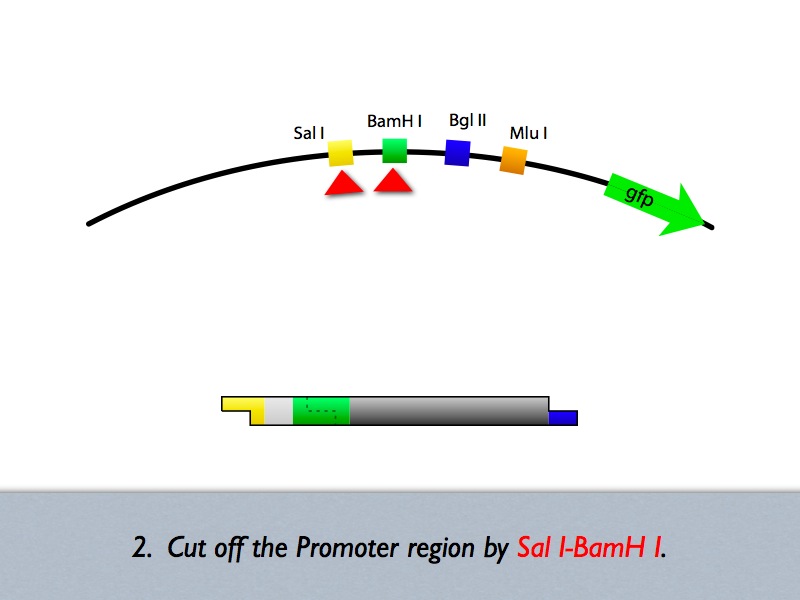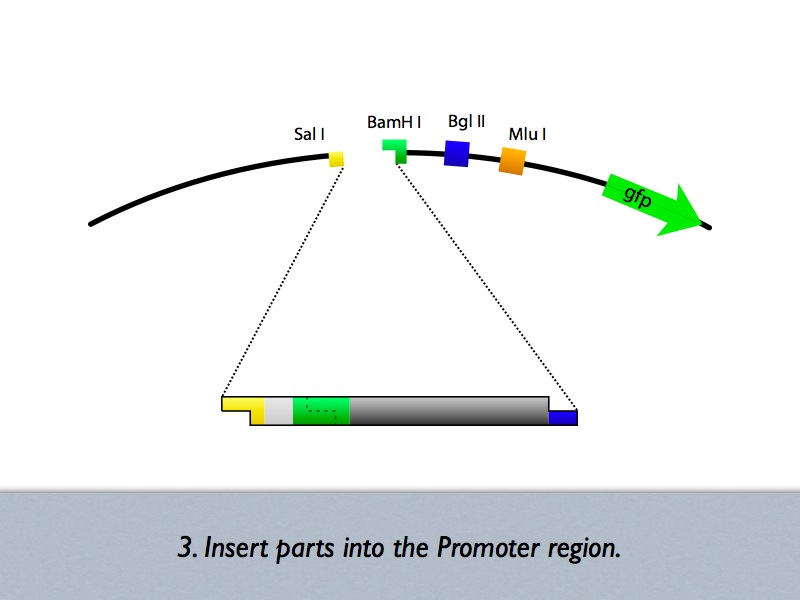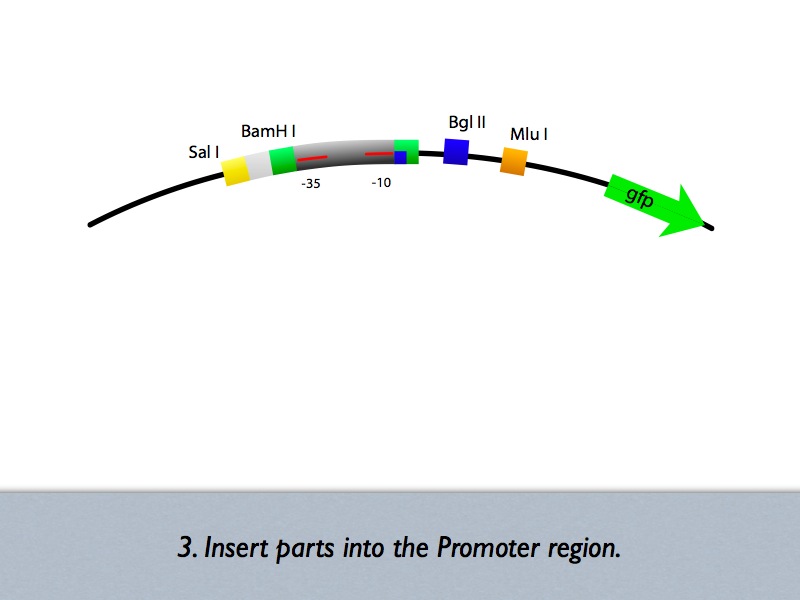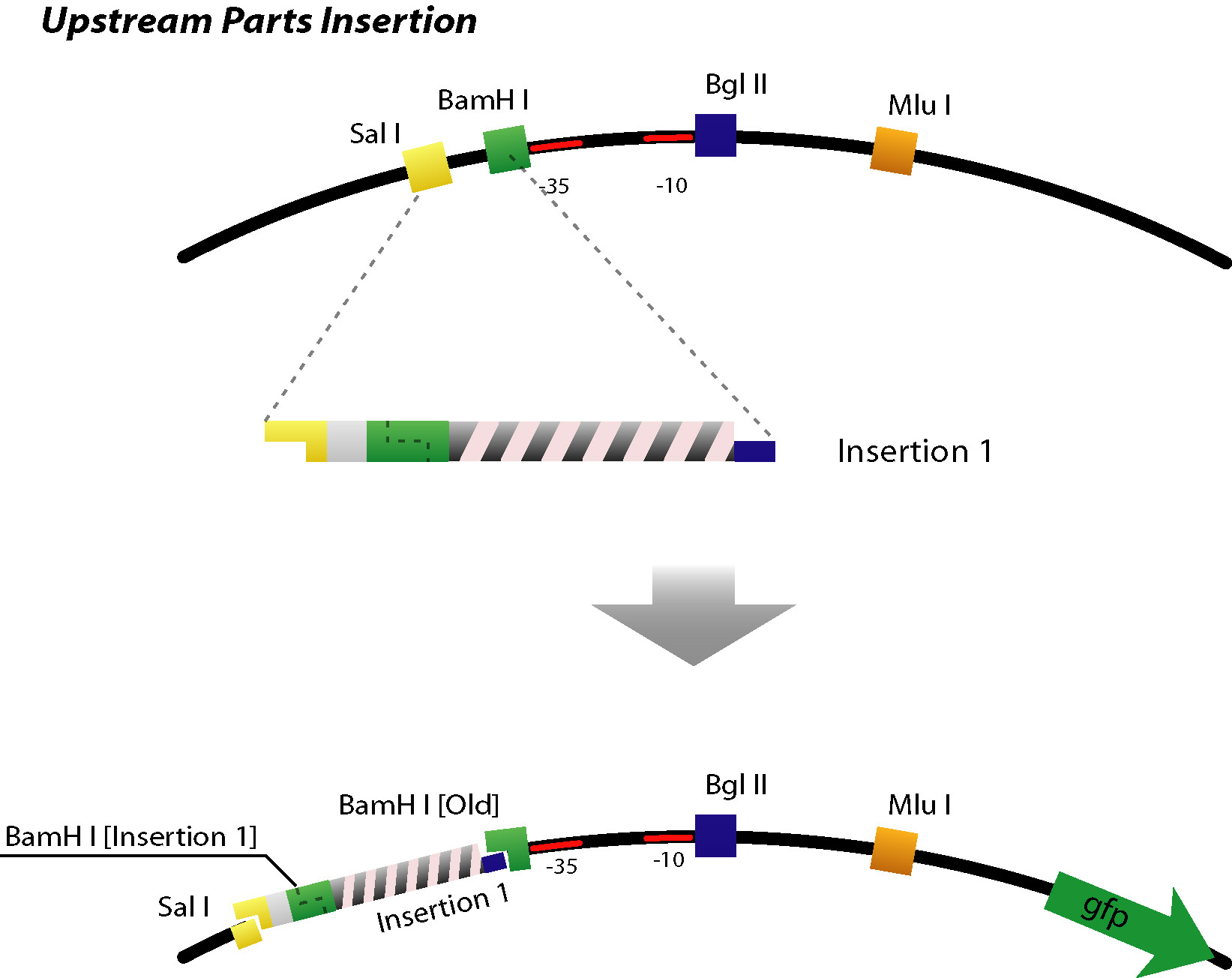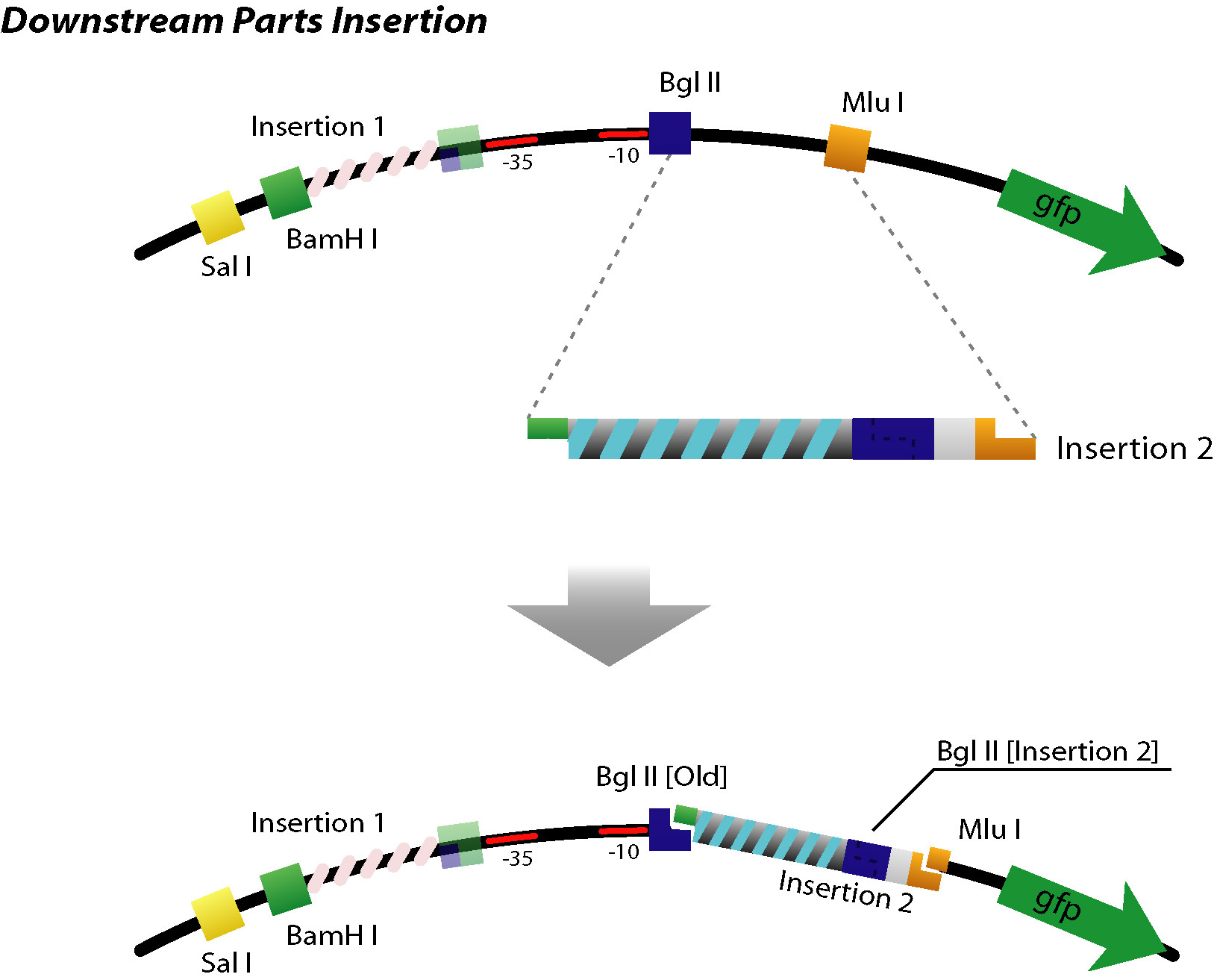Tokyo Alliance: Design/Method
From 2006.igem.org
(Difference between revisions)
| Line 3: | Line 3: | ||
---- | ---- | ||
| - | |||
| - | |||
==Systematic design concept/method== | ==Systematic design concept/method== | ||
Revision as of 18:31, 29 October 2006
Contents |
Systematic design concept/method
Abstraction Phase
State Transition Diagram
- Combination of Noughts-and-Crosses
- 362,880(=9!)[patterns] (sum up all patterns)
- 255,168 (As a game)
- 26,830 (Eliminating symmetrical pairs)
We added the following rules to reduce the number of transition functions and inputs.
- 1st
- SYANAC goes to the center of the board. (sq#5)
- 2nd
- Human goes to the specific corner(sq#1) or the edge(sq#4) of the board.
- 3rd
- SYANAC must choose sq#3
Therefore, SYANAC's conbination patterns and inputs are as follows:
- SYANAC
- 25 combination patterns(Eliminating symmetrical pairs)
- 7 types of inputs
The State Transition Diagram shown right describes SYANAC's behavior based on this rule.
Logic Gates
Here we show you the logic gates of each sq# according to the state transition.
Block Diagram (System/Device)
- System
- Device
Construction Phase
Up/Mid/Downstream
working model
- AND Gate (Repressor+Repressor)
- AND Gate (Activator+Repressor)
DNA Construction Procedure
- Midstream Parts Insertion
- [http://131.112.128.86/downloads/tokyo_mid_insertion.mov Midstream Parts Insertion Procedure (.mov)] (Requires QuickTime)
- Up/Downstream Parts Insertion
- Next parts can be inserted with the same procedure. (Up/Downstream Insertion Parts)

